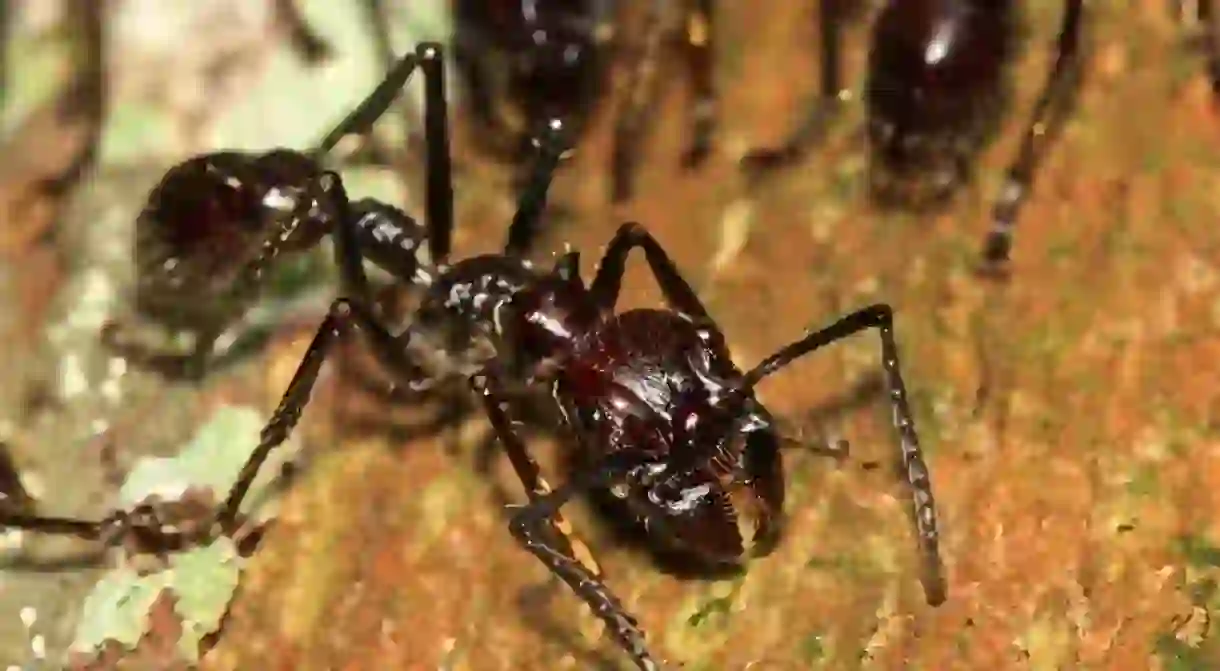Meet The Bullet Ant: The Amazon's Most Lethal Insect

The bullet ant takes its name from its potent sting that has been compared to being shot by a firearm. Entomologist Dr. Justin Schmidt describes the sting from this venomous ant as ‘pure, intense, brilliant pain. Like walking over a flaming charcoal with a 3-inch nail embedded in your heel.’ Read on to discover more about this fearsome creature.
Native to Central and South America, the bullet ant is considered to have one of the most painful bites in the world of insects. The Schmidt Pain Scale for Stinging Insects is a 4-point system developed by Dr. Schmidt to categorise the pain intensity of insect bites and stings. The honey bee sting, a venom that many people can identify with, is rated as a 2. To move up or down a point, the sting has to be considerably more or less painful. The bullet ant is rated a 4+, exceeding the highest threshold on the scale.

The only other insect that is considered to have a sting anywhere near as painful as the bullet ant is the tarantula hawk wasp, whose sting has been described as a ‘blinding, fierce and shockingly electric’ pain. However, the sting of the tarantula hawk lasts for about 5 minutes and the wasp is not considered aggressive. Its sting is used to paralyse tarantulas to use as living feeding grounds for the wasp’s larvae. The bullet ant, however, is far more aggressive when it feels the colony is under threat.
Once bitten, the pain lasts anywhere between five and 24 hours with symptoms described as waves of excruciating pain, temporary paralysis and shaking in the poisoned area. Although the venom contains poneratoxin, a type of paralysing neurotoxic peptide, the sting causes a local sting reaction. In other words, the pain is only located in the area of the bite and the venom doesn’t spread to the heart, brain or other parts of the body.
Also known as Parapanera Clavata in Latin, it lives in colonies of several hundred ants, usually situated at the base of rainforest trees. Rarely venturing on the forest floor, worker ants forage for small arthropods (such as spiders, insects and centipedes) and nectar, one of the bullet ant’s staple food. Up to four bullet ant nests can be found per hectare in the forests of Central and South America and the workers are fiercely territorial, demonstrating aggressive behaviour toward rival bullet ants. During these violent encounters, maimed ants often become the victim of the phorid fly, a parasite of the bullet ant that targets injured ants to lay eggs inside them. One bullet ant can hold up to 20 fly larvae.

Given their powerful bite, it would be natural to assume that people would want to keep out of their way. Whilst most do, the indigenous tribe Sateré–Mawe of Brazil have a ritualistic relationship with the bullet ant, which plays a crucial role in their initiation rites for boys to become warriors. The ants are submerged in a natural sedative that leaves the ants unconscious. In this dazed and non-dangerous state, hundreds of them are woven into gloves made of leaves with their heads facing into the glove before being left to wake up. At this point, boys and young men put their hands inside the gloves and bare the pain for a whole five minutes while the ants ferociously bite them in defense. The result is temporary paralysis and shaking in the arm for days. The first time doing it though is just the beginning of a long, painful process – the boys need to do it a total of 20 times to complete the initiation and be considered men and warriors. This process can take several months, sometimes even years.
The best way to avoid getting bitten by a bullet ant is to simply avoid them at all costs. Repellent won’t keep them away if they feel you are threatening their colony. So what should you do if you get bitten? Try to remove some of the venom immediately after being bitten as this can reduce the agonising throbs of pain before applying a cold compress to effectively numb the area so you feel less pain. Taking antihistamines can help to some degree, but it is best to visit a doctor if there is one nearby. The bite isn’t fatal though – just be prepared for a long wait as those waves of pain aren’t going anywhere for a few hours.













